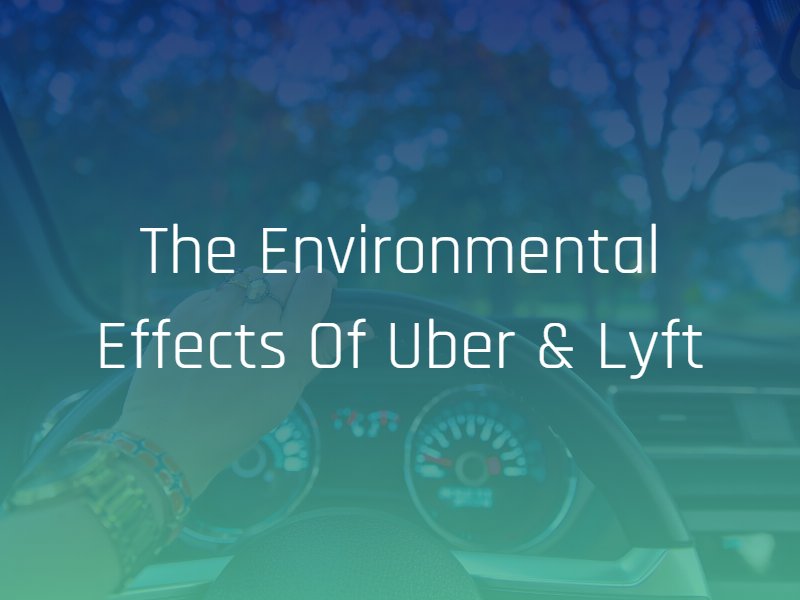Taking care of our planet now is vital to ensuring environmental health for future generations, especially as the impacts of climate change become more and more apparent. Many of us try to reduce our carbon emissions by relying on alternative forms of transportation, such as using public transit, purchasing zero-emissions vehicles, and using rideshare services like Rideshare and Lyft.
In reality, Rideshare and Lyft do little to improve our impact on the environment — and may be major contributors to the world’s pollution.
Are Rideshare and Lyft Contributing to Climate Emissions?
Although Rideshare and Lyft often hail themselves as solutions to climate change, a recent report from the Union of Concerned Scientists (UCS) says otherwise. The organization, a nonprofit composed of scientists who use their skill sets to solve the world’s most crucial problems, performed an analysis on the impact of the rideshare industry boom in recent years.
Their analysis discovered that rideshare services contribute to 69% more climate pollution than the rides they displace. As more people rely on these services to get from place to place, the more carbon emissions Rideshare and Lyft drivers produce.
According to the organization, the recent boom in the rideshare industry contributes heavily to this problem — since its founding in 2010 to 2018, Rideshare rides totaled 10 billion and counting. Lyft has contributed 1 billion rides from its founding to 2018.
The Deadheading Phenomenon
While the vehicles that rideshare drivers operate are usually more fuel-efficient than personal vehicles, the riding behaviors associated with Rideshare and Lyft actually contribute to higher emissions. UCS states that deadheading, or the travel that rideshare drivers take between rides to pick up a passenger, worsens the practice’s impact on the environment.
When you use a personal vehicle, you travel to your destination and back home. When you use a Rideshare or Lyft, the driver has to drop off his or her previous passenger, drive to your location, take you to your destination, and head to his or her next ride. When you return home, the process repeats itself.
Because of these extra steps, the amount of carbon emissions that the rideshare driver produces is nearly double the amount you would produce in a regular vehicle. Greater carbon emissions contribute to climate change.
How to Be Green When Using Rideshare or Lyft
While using a rideshare service may not be the best option for the environment, UCS recognizes that more and more people rely on these companies to perform their daily activities. Instead of using Rideshare and Lyft for an entire commute or as a sole method of transportation, the organization makes the following recommendations.
- It is usually more fuel efficient to use public transportation over a private vehicle or rideshare service. If you have a public transit route that can take you to work or school, use it. If the bus stop or train station is too far to walk to, you can use a rideshare service for a portion of your trip rather than the entire trip to lower your emissions.
- If carpool trips are available on your rideshare app, take advantage of them. Sharing a vehicle with one or more passengers can help cut down on your collective carbon emissions, and may also be cheaper than taking a regular Rideshare or Lyft ride. Alternatively, you can see if another carpool company is operating in your area if a carpool option is not available.
- If you rely on Rideshare and Lyft regularly, encourage these companies to invest in zero-emissions vehicles and to electrify their fleet. Using more of these vehicles can decrease these services’ impact on the environment.
It is important for Rideshare and Lyft to respond to these reports on its contribution to climate changes, and take greater measures to protect the planet. In addition, these companies must also respond to other reports that highlight the dangers of their services — including the high amount of sexual assaults and other violent crimes that occur in their vehicles.
Contact a rideshare attorney as soon as possible if you have experienced injury, assault, or any other acts of violence at the hands of a rideshare driver. You may have many pathways to justice available to you, including both civil and criminal remedies.

